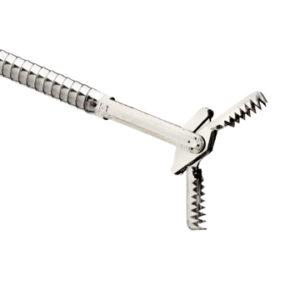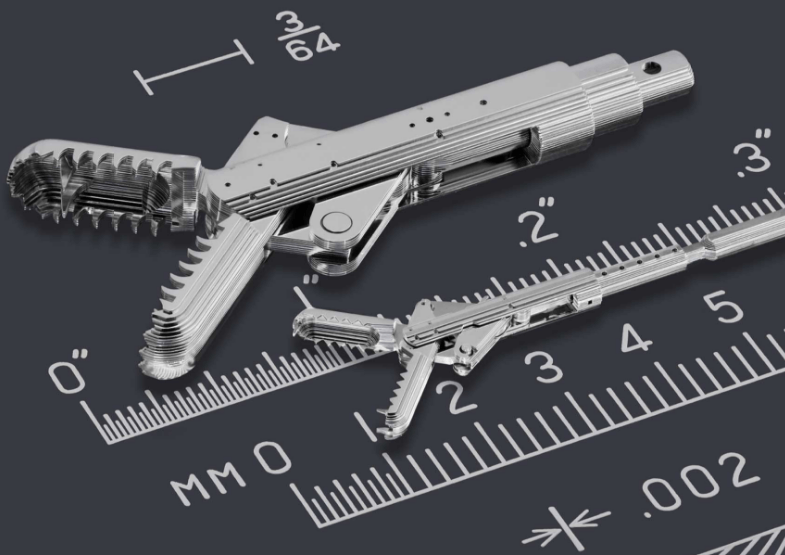Microfabrica and US Endoscopy Partner to Create a Tiny 3D Printed Weapon in the Huge Battle Against Pancreatic Cancer
 Any cancer diagnosis is frightening, but pancreatic cancer is especially so. It’s more difficult to treat than other types of cancers, as it spreads rapidly and is rarely detected until it’s in an advanced stage. According to the American Cancer Society, the one-year relative survival rate for pancreatic cancer is 20%, while the five-year rate is a dismal 7%. These low numbers are largely due to the fact that, again, by the time most tumors are detected they’ve already progressed past the point at which they can be surgically removed. Right now, pancreatic cancer is the fourth-leading cause of cancer-related death in the United States and is expected to surpass breast cancer in 2017.
Any cancer diagnosis is frightening, but pancreatic cancer is especially so. It’s more difficult to treat than other types of cancers, as it spreads rapidly and is rarely detected until it’s in an advanced stage. According to the American Cancer Society, the one-year relative survival rate for pancreatic cancer is 20%, while the five-year rate is a dismal 7%. These low numbers are largely due to the fact that, again, by the time most tumors are detected they’ve already progressed past the point at which they can be surgically removed. Right now, pancreatic cancer is the fourth-leading cause of cancer-related death in the United States and is expected to surpass breast cancer in 2017.
 In light of those dark statistics, however, there’s hope. California-based Microfabrica, a leader in advanced technology, combines 3D printing technology with advanced semiconductor manufacturing processes to design and build solutions on the microscale for various industries including aerospace, electronics, and medicine. When it comes to medical tools, smaller is often better, allowing for surgical procedures to be more precise and less invasive. Microfabrica’s technology allows for the production of tiny, intricate and complex tools with multiple parts in advanced biocompatible materials.
In light of those dark statistics, however, there’s hope. California-based Microfabrica, a leader in advanced technology, combines 3D printing technology with advanced semiconductor manufacturing processes to design and build solutions on the microscale for various industries including aerospace, electronics, and medicine. When it comes to medical tools, smaller is often better, allowing for surgical procedures to be more precise and less invasive. Microfabrica’s technology allows for the production of tiny, intricate and complex tools with multiple parts in advanced biocompatible materials.
While 3D printing is a critical part of Microfabrica’s process, it’s enhanced by semiconductor manufacturing technology, which enables them to produce precise, micro-scale metal devices in commercial volumes and in one piece, without the need for assembly. Today, the company announced that they will be producing what they say is the world’s first submillimeter biopsy forceps, designed to improve the reliability of tissue biopsies in the gastrointestinal tract – including biopsies of pancreatic cystic lesions, which may or may not be early signs of cancer.
 The submillimeter forceps are being developed in collaboration with US Endoscopy, a subsidiary of medical technology giant STERIS. The Ohio-based company describes itself as a “prolific designer and supplier of urgently needed, niche diagnostic, therapeutic, and support accessories used in the GI Endoscopy market,” and their products include micro forceps designed to allow physicians to obtain better tissue samples from the GI tract, leading to better diagnoses and more targeted treatments.
The submillimeter forceps are being developed in collaboration with US Endoscopy, a subsidiary of medical technology giant STERIS. The Ohio-based company describes itself as a “prolific designer and supplier of urgently needed, niche diagnostic, therapeutic, and support accessories used in the GI Endoscopy market,” and their products include micro forceps designed to allow physicians to obtain better tissue samples from the GI tract, leading to better diagnoses and more targeted treatments.
“US Endoscopy’s micro forceps is an incredibly innovative product with multiple applications,” said Eric C. Miller, CEO of Microfabrica and medical device industry veteran. “The micro forceps design takes full advantage of our unique capability to print highly complex geometries with ultra-high precision at the submillimeter scale.”
US Endoscopy’s micro forceps are a little scary-looking with their serrated jaws, but those serrated jaws are what allow doctors to acquire better tissue samples, while a spring sheath lets the device be used in tortuous positions (tortuous = complex and twisty, not to be confused with torturous, so relax). Not much detail has been released about what the partnership between US Endoscopy and Microfabrica will entail, but the combination of US Endoscopy’s design and Microfabrica’s ability to produce micro-scale devices should result in a biopsy tool that’s smaller and even more precise than anything this particular market has seen before. Discuss in the Microfabrica forum at 3DPB.com.
Subscribe to Our Email Newsletter
Stay up-to-date on all the latest news from the 3D printing industry and receive information and offers from third party vendors.
You May Also Like
Precision at the Microscale: UK Researchers Advance Medical Devices with BMF’s 3D Printing Tech
University of Nottingham researchers are using Boston Micro Fabrication‘s (BMF) 3D printing technology to develop medical devices that improve compatibility with human tissue. Funded by a UK grant, this project...
3D Printing Webinar and Event Roundup: April 21, 2024
It’s another busy week of webinars and events, starting with Hannover Messe in Germany and continuing with Metalcasting Congress, Chinaplas, TechBlick’s Innovation Festival, and more. Stratasys continues its advanced training...
3D Printing Webinar and Event Roundup: March 17, 2024
It’s another busy week of webinars and events, including SALMED 2024 and AM Forum in Berlin. Stratasys continues its in-person training and is offering two webinars, ASTM is holding a...
3D Printed Micro Antenna is 15% Smaller and 6X Lighter
Horizon Microtechnologies has achieved success in creating a high-frequency D-Band horn antenna through micro 3D printing. However, this achievement did not rely solely on 3D printing; it involved a combination...






























